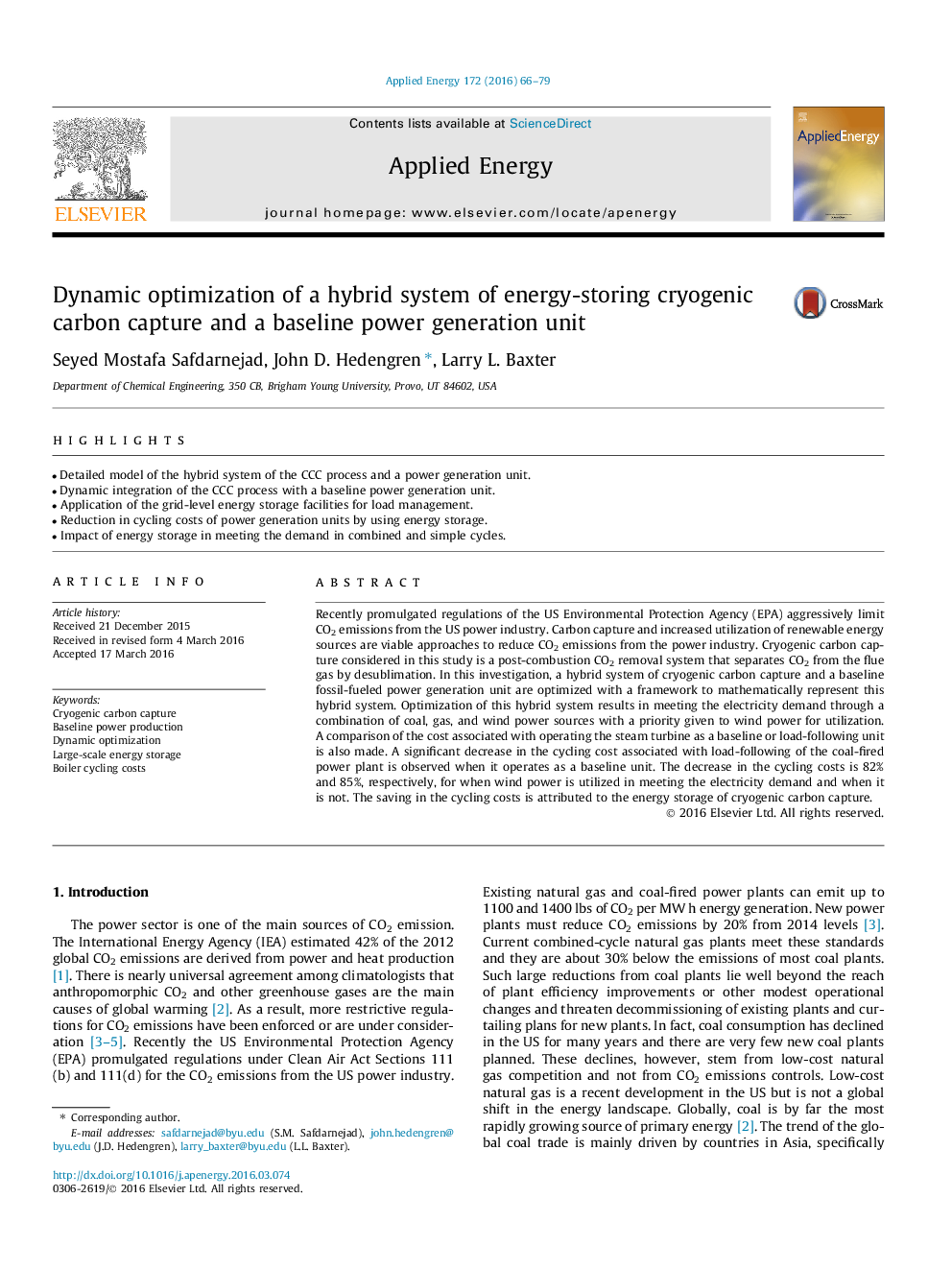| Article ID | Journal | Published Year | Pages | File Type |
|---|---|---|---|---|
| 6683229 | Applied Energy | 2016 | 14 Pages |
Abstract
Recently promulgated regulations of the US Environmental Protection Agency (EPA) aggressively limit CO2 emissions from the US power industry. Carbon capture and increased utilization of renewable energy sources are viable approaches to reduce CO2 emissions from the power industry. Cryogenic carbon capture considered in this study is a post-combustion CO2 removal system that separates CO2 from the flue gas by desublimation. In this investigation, a hybrid system of cryogenic carbon capture and a baseline fossil-fueled power generation unit are optimized with a framework to mathematically represent this hybrid system. Optimization of this hybrid system results in meeting the electricity demand through a combination of coal, gas, and wind power sources with a priority given to wind power for utilization. A comparison of the cost associated with operating the steam turbine as a baseline or load-following unit is also made. A significant decrease in the cycling cost associated with load-following of the coal-fired power plant is observed when it operates as a baseline unit. The decrease in the cycling costs is 82% and 85%, respectively, for when wind power is utilized in meeting the electricity demand and when it is not. The saving in the cycling costs is attributed to the energy storage of cryogenic carbon capture.
Keywords
Related Topics
Physical Sciences and Engineering
Energy
Energy Engineering and Power Technology
Authors
Seyed Mostafa Safdarnejad, John D. Hedengren, Larry L. Baxter,
